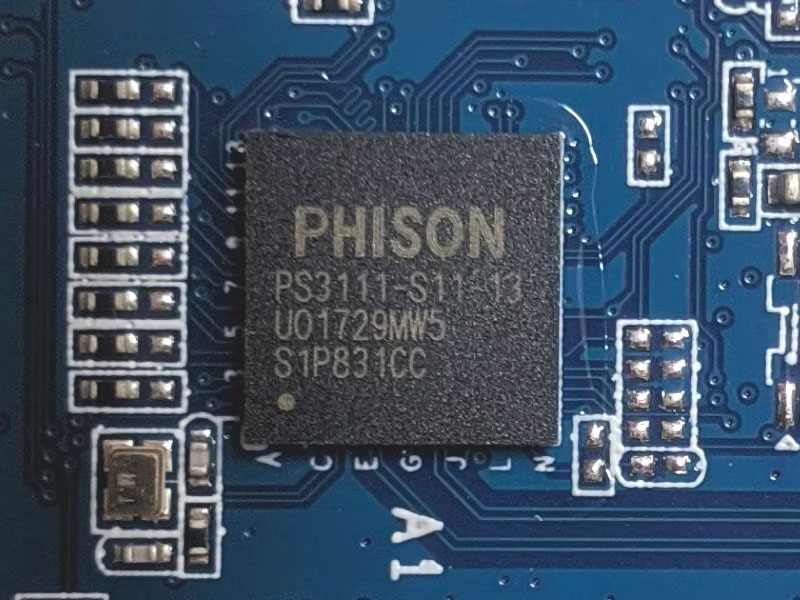For faster data transfer, check these hidden metrics before buying an SSD!
What is SSD DRAM cache?
SSD DRAM cache or DRAM (Dynamic Random Access Memory) buffer is a high-speed cache that acts as a conduit between SSD (Solid State Drives) and the PC. This volatile memory can quickly store and retrieve data but will lose its content when the power is turned off. It is different from long-term storage devices such as SSDs, which use NAND Flash technology.
To understand better, let's break down each component:
- SSD : These drives use NAND Flash technology to store data. Unlike traditional, they have no moving parts and data retrieval is faster.
- DRAM : This volatile memory temporarily stores data for faster processor access. It provides higher speed than the fixed NAND Flash memory used in SSDs.
- Cache : In a computer, a cache is a temporary storage area containing frequently accessed data for quick retrieval.
How does SSD DRAM cache affect data transfer speed?

Now that we know what SSD DRAM cache is, let's see how it affects data transfer. When accessing data, the processor sends a request to the SSD. Then, the SSD retrieves data from the NAND Flash memory and temporarily stores it in the DRAM cache. From there, the DRAM cache receives the data and transfers it to the processor. This process is much faster than retrieving data directly from NAND Flash SSD memory.
To understand better, think of a busy highway with many additional lanes. The highway is the SSD, while the additional lanes represent the DRAM cache. In dense traffic (high data transfer rates), additional lanes (DRAM cache) allow cars (data) to move faster than a single lane (accessed directly). from NAND Flash memory).
Without an SSD DRAM cache, the processor will have to wait for the NAND Flash memory to access and transfer data. This delay is called latency and it slows down data transmission. In addition, DRAM cache size significantly affects data transfer speed. Larger DRAM caches can temporarily store and retrieve more data, reducing the need to use slower NAND Flash memory.
How to check SSD DRAM cache before buying
How to know if your SSD has SSD DRAM cache? Here are some ways to find out:
- Check the manufacturer's specifications : Check the SSD's specifications to see if it has DRAM cache. Most manufacturers list this information in their product descriptions or specifications. Look for terms like DRAM cache or DRAM buffer to confirm.
- Read the product label : If you buy an SSD at a store, ask the seller or check the packaging to see if it mentions DRAM cache. Manufacturers often emphasize this feature because it is an important characteristic.
- Online forums and reviews : You can also check online forums and reviews about SSD models. Users often mention and share personal experiences in their reviews.
DRAM is a great way to get more power from an SSD and speed up transfer times. Therefore, if you often share large files, you should consider buying an SSD with good DRAM cache.
You should read it
- Google Drive 4,2021.46200, Download Google Drive here
- How to identify hard drive failure, hard drive failure, bad hard drive on Windows
- How to use the RAM drive in Windows 10
- How to Partition a Hard Drive in Windows 8
- How to use Google Drive like free FTP server or Network Drive
- How to use Dev Drive for developers on Windows 11
 GitHub Models launches, allowing developers to find and test AI models for free
GitHub Models launches, allowing developers to find and test AI models for free How to log in to Facebook on computer using QR code - Login to Facebook web by phone
How to log in to Facebook on computer using QR code - Login to Facebook web by phone Summary of Touchpad operations on Windows 10, Windows 11
Summary of Touchpad operations on Windows 10, Windows 11 How to speed up text processing on Word
How to speed up text processing on Word Facebook forces users to watch 8 seconds of ads before continuing to scroll
Facebook forces users to watch 8 seconds of ads before continuing to scroll Instructions for experiencing Circle to Search on Chrome
Instructions for experiencing Circle to Search on Chrome